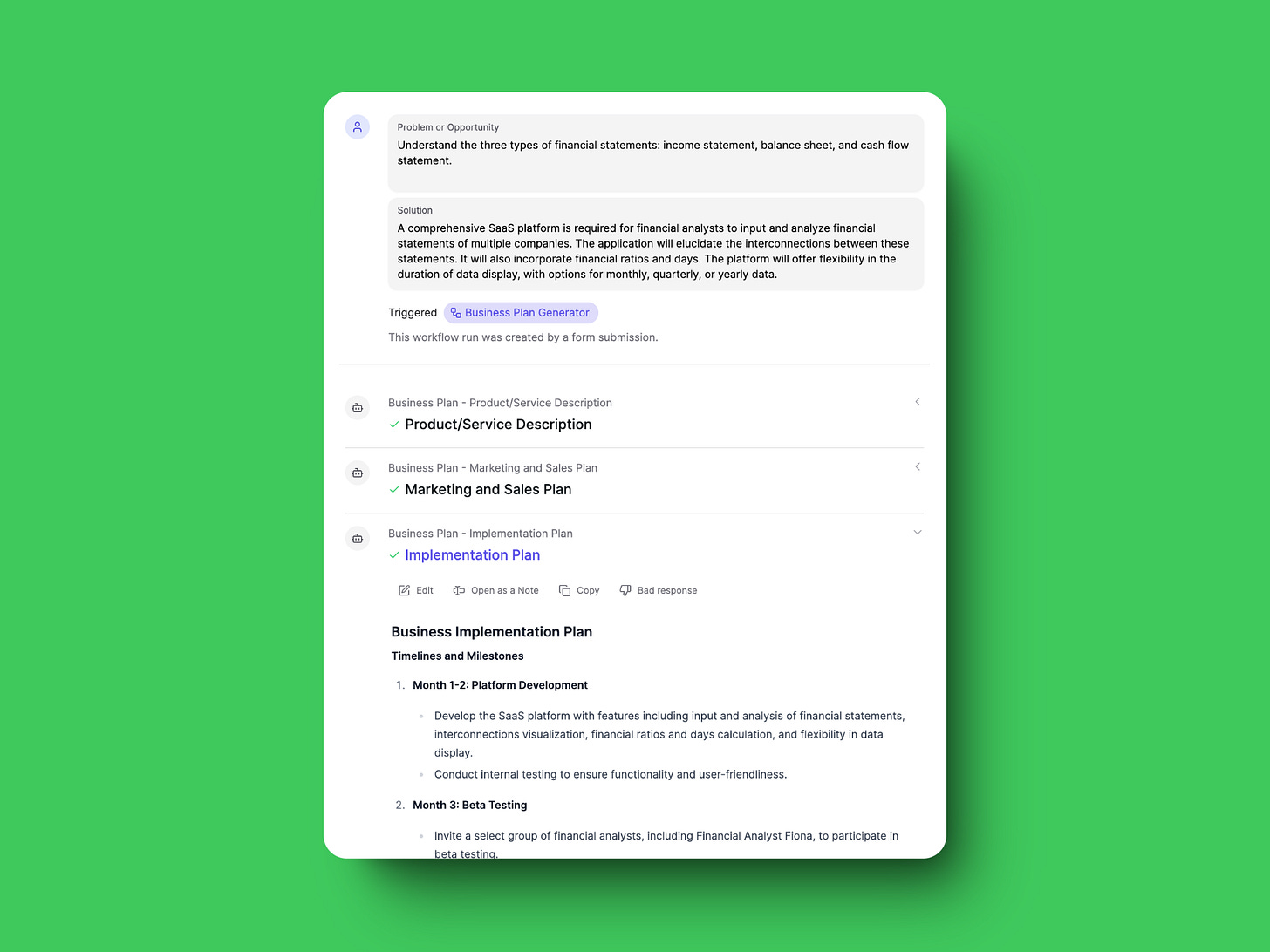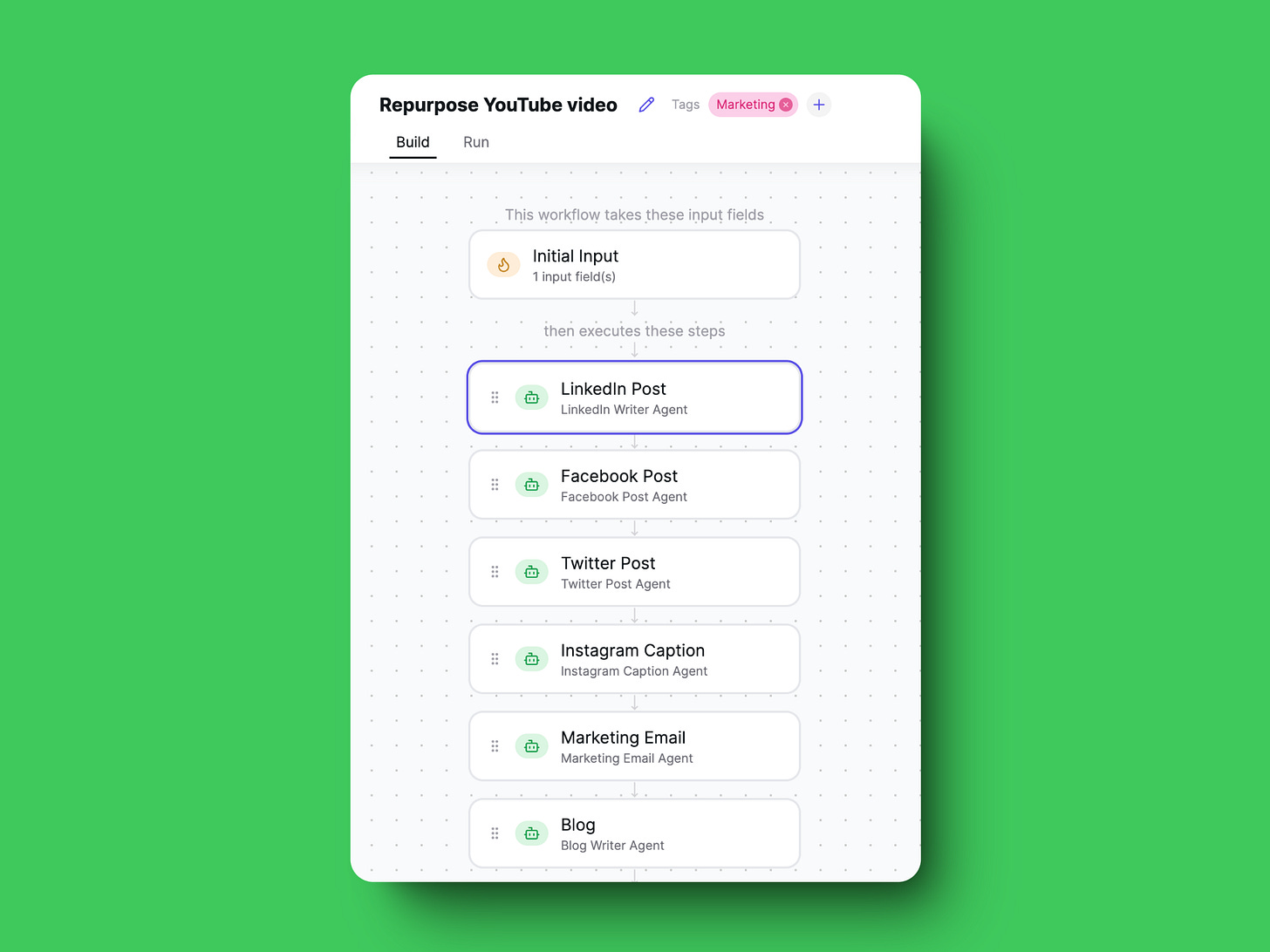How to stack multiple GPTs together to do a multi-step process
We're all used to working with custom GPTs individually. What if we can stack multiple GPTs together?
If you've been tinkering with custom GPTs, you're probably already amazed at their individual capabilities. But have you ever thought about the potential of stacking multiple GPTs together?
I'm talking about connecting multiple specialized GPTs to work together on bigger tasks. Each GPT is super good at one thing, and when you put them all together, they can tackle some pretty complex stuff that a single GPT may struggle to do.
How does it work in real life?
Let me share some cool ways I've been experimenting with this:
1. Content Repurposing
Imagine taking a single YouTube video and effortlessly transforming it into tailored content for LinkedIn, Facebook, Twitter, Instagram, email, and a blog post. Six different GPTs, each specialized for a specific platform, could work together to achieve this seamlessly.
2. Job Application Assistance
For job seekers, a stack of GPTs could revolutionize the application process. One GPT could analyze a CV against a job description, another could craft a personalized cover letter, and a third could generate interview preparation questions.
3. Educational Content Creation
Lecture recordings could be transformed into comprehensive study materials. One GPT could create a detailed blog post, another could generate mind maps, and a third could produce flashcards – all from the same source material.
4. Podcast Production
When preparing for a podcast episode, stacked GPTs could generate interview questions, write episode intros, and create announcement posts, all based on the guest profile and episode topic.
5. Business Planning
For entrepreneurs, a stack of GPTs could assist in creating a comprehensive business plan. Different GPTs could handle market research, customer persona creation, brand storytelling, marketing strategy, sales strategy, and even populate a Business Model Canvas.
So why am I so obsessed with this?
When specialized GPTs team up, the results can be impressive. It's like having a group of experts collaborating on a project, each bringing their unique skills to the table. The outcome? More comprehensive and nuanced results that often surpass what a single, general-purpose AI can do. They can also build upon each other's outputs, creating a more coherent and contextually relevant final product.
Another advantage of stacking GPTs is the speed it brings to the process. Instead of wasting time switching between different GPTs and copying and pasting information, you can establish a smooth workflow that gets you from start to finish much faster.
Furthermore, once you play around with enough commercial AI tools on the market right now, you’ll recognize many of them are essentially pre-configured stacks of GPTs designed for specific purposes. By learning to stack GPTs yourself, you can create custom solutions tailored to your exact needs without the overhead of multiple subscriptions. As your needs evolve, you can easily modify your GPT stacks or create new ones, providing a level of flexibility that off-the-shelf solutions often can't match.
But perhaps one of the most exciting aspects of stacking GPTs is the potential for innovation. By combining different AI capabilities in novel ways, you can create solutions to problems that might not have been feasible before.
How can you actually make this happen?
The great news is that stacking GPTs is more than just a concept; it’s entirely achievable.
You can bring this idea to life using MindPal, a platform that features a "multi-agent workflow." In this setup, each "agent" functions like a custom GPT, allowing you to connect them into a multi-step AI workflow, with each step handled by a specialized agent.
If you’re unsure where to begin, MindPal makes it easy to explore the world of multi-agent AI workflows. Their landing page is filled with a variety of template workflows that you can try out without even needing to sign up. It’s a fantastic way to get a feel for how these systems work.
While platforms like MindPal provide a solid starting point for multi-agent workflows, the true power lies in understanding the concept and applying it creatively to your own needs. As you experiment with stacking GPTs, you may uncover new and innovative ways to work that you hadn’t considered before.
I’d love to hear from you! Have you tried stacking GPTs? What unique use cases have you discovered?











I've been wanting to try GPT stacking but am wondering if it's only possible using a 3rd party app (like MindPal). Do you know if/whether ChatGPT (or any of the other major AIs) offer GPT stacking in the app itself?